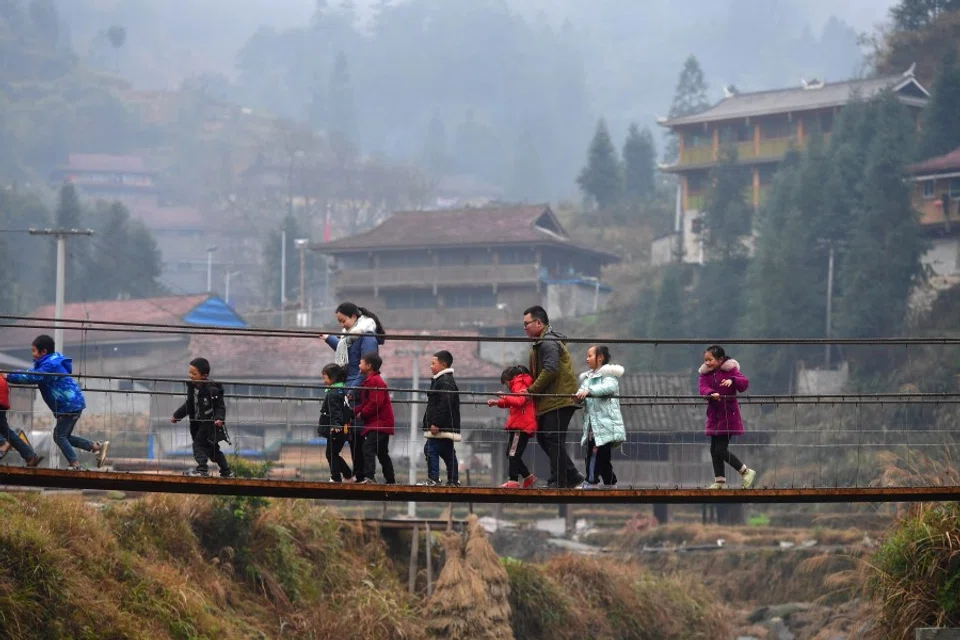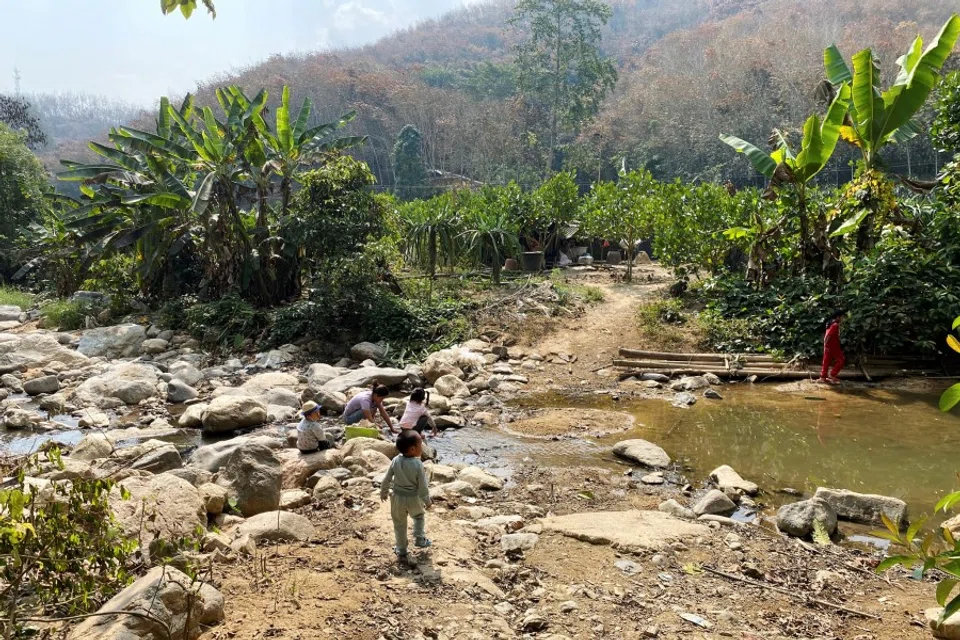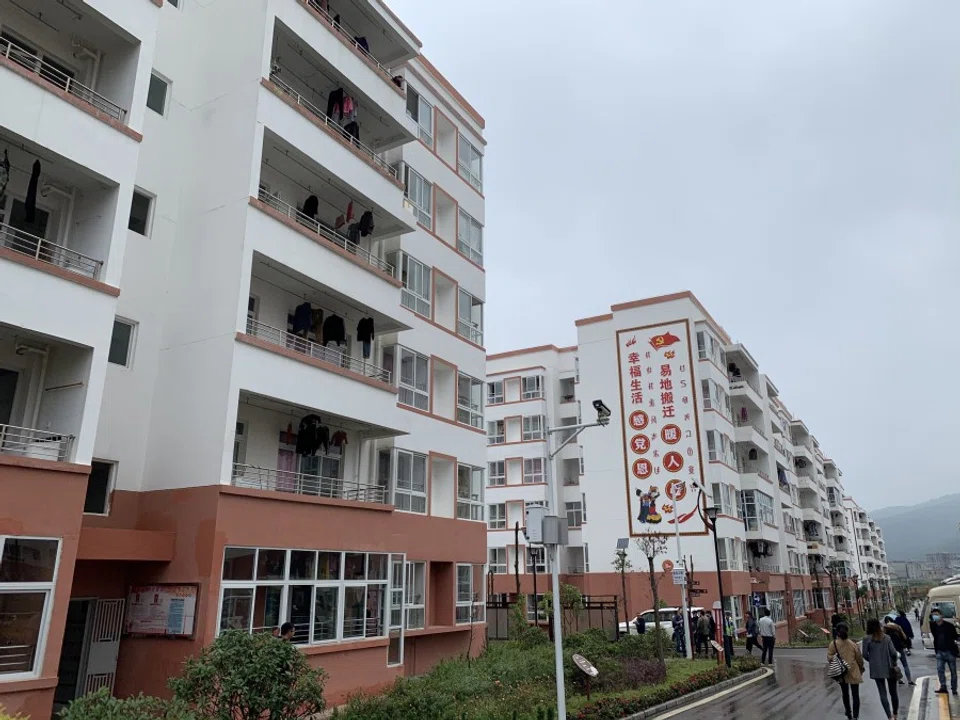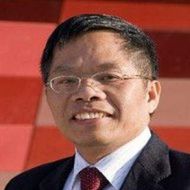Chinese researcher: This is how China gets rid of poverty

Eliminating poverty is a major socioeconomic issue around the world. In September 2015, the UN General Assembly adopted the 2030 Agenda for Sustainable Development which included 17 Sustainable Development Goals, the first of which was to "End poverty in all its forms everywhere". Countries and regions are at different developmental stages and have different economic, political, cultural assets and natural resources at their disposal. Hence, each country/region faces different difficulties and challenges in eliminating poverty.
China is the most populous developing country in the world; it has gone through over 40 years of reform and opening up, and its economy has seen rapid and sustained growth. The trickle-down effect has allowed all its people to benefit, and enabled a poor and backward agricultural country to grow into a thriving and modern industrialised country, with a per capita GDP that has grown from US$156 in 1978 to US$10,700 in 2020 - a nominal growth of 69 times - and a nominal net income growth of 112 times among the rural population.
Rural poverty in China has been falling. In particular, since 2012, China's targeted poverty alleviation strategy has seen a decisive victory - as of the end of 2020, 592 counties, 128,000 villages, and 98.99 million people are no longer tagged as poor. China has contributed its wisdom and solutions to the human fight against poverty in terms of theory, practice, and results.
China has reached the UN's sustainable development goal of eliminating poverty ten years ahead of schedule, resolving poverty and livelihood issues that have plagued civilisation for years. This is a miracle of China's reform and opening up, and also a miracle of the world's recent economic development. In contrast, due to the impact of the coronavirus, average global poverty rates could rise from 10% in 2019 to around 11% in 2020, as the pandemic continues to push as many as 150 million people into extreme poverty by the end of 2021. And in sub-Saharan Africa, the average poverty rate remains as high as 35%.

Evolution of China's poverty alleviation efforts
Looking back at 40 years of reform and opening up, amid the general improvement in China's living standards, some families in various regions - especially in backward border village areas in western China - cannot get out of poverty through their own efforts for reasons including illness, lack of education, a bad environment for production, or lack of personal motivation. To aid these villages, in particular, the trickle-down effect of economic growth needs to be complemented by the government's poverty alleviation efforts.
The Chinese government's poverty alleviation efforts began in the 1980s. In 1986, the State Council set up a committee to lead economic development in poor regions; in 1993, its name was changed to the State Council Leading Group Office of Poverty Alleviation and Development, to coordinate poverty alleviation efforts throughout the country.
To make limited resources go further, the country zeroed in on poor counties on a national level, while engaging in thorough poverty alleviation of households in extreme poverty in other places. The "8-7 national poverty reduction programme" of 1994 was intended to resolve the livelihood issues for 80 million people designated as poor at the time within seven years.
However, the more advanced the poverty alleviation efforts, the more obvious the issues such as "stubborn poverty", the "poverty trap", and "generational poverty".
By the 21st century, with continued economic growth and increasing per capita income, China kept raising its poverty alleviation targets, launching two ten-year rural poverty alleviation programmes for 2001-2010, and 2010-2020. These efforts focused on 14 regions in extreme poverty, especially the "three regions and three prefectures", providing a clearer and more effective long-term strategy to build a moderately affluent society and eradicate abject poverty. (NB: "'The "three regions' refer to the Tibet Autonomous Region, four Tibetan-inhabited provinces, and four prefectures in southern Xinjiang Uyghur Autonomous Region, while the 'Three Prefectures' refer to Liangshan Yi Autonomous Prefecture in Sichuan Province, Nujiang Lisu Autonomous Prefecture in Yunnan Province and Linxia Hui Autonomous Prefecture in Gansu Province.")

China's 40 years of poverty alleviation efforts have created a brilliant chapter in human history. China's poor population has fallen from 770 million at the start of reform and opening up (based on the poverty line in 2010) to 98.99 million people in 2012, while poverty rates have fallen from 97.5% to 10.7%. However, the more advanced the poverty alleviation efforts, the more obvious the issues such as "stubborn poverty", the "poverty trap", and "generational poverty".
Rising challenges in poverty alleviation
Even with the growing trickle-down effect of economic growth and the shrinking numbers of people in abject poverty, it has been increasingly difficult to get the last group of people out of poverty. "Stubborn poverty" means that no matter how the economy develops, for various reasons, there will be a handful of people who will never get out of poverty without effective help; these people are unable to get out of poverty on their own mainly because of illness, losing a spouse or parents, or a lack of skills.
The "poverty trap" refers to some poor people who receive long-term support and have lost the motivation to get themselves out of poverty and who have developed a sense of dependence and "waiting for handouts", rather than losing the ability to get themselves out of poverty due to objective factors. "Generational poverty" means the previous generation was poor and due to factors such as lack of education, poor intellectual capabilities, and a poor environment, the next generation is also poor.
Less-educated parents lacked the cognitive ability even to collect the nutritional packages that the government gave out to babies and young children, which seriously affected the healthy growth of children in poor households.
We analysed the results of a survey conducted on 813 poor households from six villages in abject poverty in southern Xinjiang. The sense of "waiting for handouts" is stronger in the remote areas with minority groups, where nearly one-third of poor people lack the will and desire to get themselves out of poverty. We also conducted a regression analysis of cross-sectional, multi-year data obtained from a nationwide survey of 2,300 households, and found that the educational level and intellectual ability of parents and grandparents can have a significant impact on the income level and chances of poverty among later generations.
Also, we conducted long-term tracking and regression analysis of the educational situation of all members of 2,000 sample households in more than 100 villages in ten provinces, cities, and autonomous regions. We found that nutrition in babies and young children had a significant impact on their educational and income levels as they grew up. Less-educated parents lacked the cognitive ability even to collect the nutritional packages that the government gave out to babies and young children, which seriously affected the healthy growth of children in poor households. In all the samples, loss of ability to work due to illness, medical costs, broken marriages, children's educational costs, and a poor environment for production were all key factors leading to poverty.

Resolving "stubborn poverty", the "poverty trap", and "generational poverty" is the difficulty and pressure point of the "last mile" of poverty alleviation. China has pioneered "targeted poverty alleviation" and set up files and records. First, it accurately identifies who needs help and finds out the root cause of their poverty. Then, according to the prescribed poverty line, it takes the approach of resolving worries about food and clothes, and guaranteeing the most basic living needs such as basic healthcare, education, and housing. It seeks out poor families in each village, then takes measures including industrial development, relocation, eco-compensation, education, and social security, giving targeted help of different types, levels, and aspects to different categories of poor households.
The central government has even mobilised the entire community for poverty alleviation, by engaging in coordinated measures such as having the eastern region assist the western region, and encouraging companies to help. It has implemented a five-level management system, including provinces, cities, counties, towns, and villages, with responsibility resting squarely at each level and a top-down movement of resources - poverty alleviation efforts are precise down to villages, households, and individuals. Local governments have even deployed nearly 200,000 "first secretaries" from organisations and companies to villages, and almost the same number of university students as "village officials", to help with poverty alleviation efforts in all poor villages throughout China.
Through comprehensive coverage of records, dynamic monitoring, and targeted measures down to the individual, China has built a complete system of poverty identification, policy implementation, to the monitoring of poverty alleviation efforts.
China's innovations in targeted poverty alleviation
The global fight against poverty has never ceased, but so far, apart from China, almost no developing country has managed to thoroughly eradicate abject poverty. In terms of targeted poverty alleviation, China has been innovative in theory and practice, which provides useful lessons in mankind's fight against poverty.
First, defining the poverty line in financial and non-financial terms according to local conditions. From 2012, China defined abject poverty not just in financial terms according to global standards, but also took into account the lifestyles in various regions, contributing to poverty alleviation theory in its own unique way, and using a multi-faceted definition of poverty - more sophisticated and more scientific than the World Bank's definition - in its poverty alleviation efforts. It emphasised liangbuchou (lit. two no worries) and sanbaozhang (lit. three guarantees), meaning no worries about food and clothes, and guaranteed education, basic healthcare and housing security.
Second, building an efficient poverty alleviation framework. Through comprehensive coverage of records, dynamic monitoring, and targeted measures down to the individual, China has built a complete system of poverty identification, policy implementation, to the monitoring of poverty alleviation efforts. Such measures can only be implemented by developed economies; most developing countries so far cannot provide comprehensive coverage or targeted measures, much less dynamic monitoring. This was possible because of the close links between the party and the people in China, and an effective multi-level political system, as well as digital technology that minimises the cost of managing enormous amounts of personal information and data.
Third, taking a multi-faceted, multi-level targeted strategy to poverty alleviation. China can target specific situations and implement multi-pronged, multi-level, flexible poverty alleviation measures, and it can also rally its strength and implement comprehensive poverty alleviation efforts.
China has effectively combined support for poverty alleviation, self-will, and intellectual ability to make poverty alleviation funds more effective while reducing dependence and laziness among the people...

For example, infrastructure construction has resolved difficulties in transport and communication, and created many jobs for poor households in poor areas; relocation has thoroughly resolved long-term poverty in remote backward areas, as nearly 10 million registered poor people were relocated out of poverty during the 13th Five-Year Plan, equivalent to the population of a medium-sized country, an unprecedented move in the history of poverty alleviation; eco-compensation has changed the quality of the environment and helped people out of poverty; and measures such as pension subsidies, co-op healthcare for villages, nine years of mandatory education, waiving agricultural taxes, providing agricultural production subsidies, rural subsidised credit, and insurance services, have all reduced the burden on farmers and encouraged agricultural production, which is helpful to poverty alleviation.
Fourth, sparking self-motivation among poor people through poverty alleviation efforts. Simultaneous implementation of multiple measures and single measures that achieve multiple objectives have made poverty alleviation efforts more effective and increased key productivity of farmers and regions in the process. Besides a host of social security measures for poverty alleviation, most of China's poverty alleviation measures have to do with increasing employment and stimulating productivity. China has effectively combined support for poverty alleviation, self-will, and intellectual ability to make poverty alleviation funds more effective while reducing dependence and laziness among the people, which is fundamentally different from the welfare states in Europe's developed countries.
The welfare state gives simple coverage to the low-income group, and plays an important role in supporting the "weak" and reducing the income gap. However, such a welfare system comes with laziness and dependence. In the long term, it weakens the will of the low-income group to get themselves out of poverty and suppresses society's economic vitality. China's poverty alleviation efforts not only resolve poverty, but turn the poor population into key economic drivers rather than stumbling blocks to the country's economic development.
Related: Lifting 'the poorest of the poor' out of poverty in Sichuan: Does poverty alleviation mean uprooting people from their homes? | Persistent poverty and a weak middle class: China's fundamental challenge | Poverty alleviation in Tibet: For young Tibetans, material wealth and city life beckon | China is now 'a moderately affluent society'? | Chinese villages' failed toilet revolution, clogged ponds and dangerous roads | Only 17 people left in poverty
